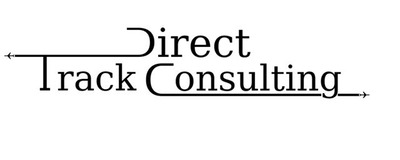Who owns the GNSS/GPS system?
Third Post:
Who owns the GNSS/GPS system?
The first operational navigation system using information derived from a constellation of satellites was the Global Positioning System developed and owned by the United States Government/Military. The system is reported to have become fully operational in 1995.
The first GPS receivers available for civilian use were very crude by today’s standards. The accuracy levels were in the 100’s of meters as opposed to the 10’s of meters available today. The level of accuracy available to civilian GPS units improved in May of 2000 when the US Military turned off the ‘Selective Availability’. Selective Availability is a system installed on the GPS satellites to deliberately degrade the accuracy of the GPS signal. This functionality was designed in order to deny any potential enemy precise position information that could be used against the US.
The complete unilateral control the US Military had over the GPS system caused concern among other nations and industries. The fear was that if you became reliant on the GPS signal for safety critical operations or for operations competing with the US national interest, the GPS signals could be denied at the flip of a switch by a foreign Military Power.
This discomfort encouraged a number of nations and one group of nations to develop their own versions of GPS. The Russians have developed and have deployed their own Global system called GLONASS. The Chinese have developed their own Global system called Beidou, The Japanese and Indians have their own regional systems covering their specific geographical areas. These various systems are all controlled by the Military of their governments.
The only Global system owned and operated entirely by civilian authorities is the European Union’s Galileo system. The Galileo system is in the deployment stages with 4 satellites in orbit at the time of writing.
Many older GPS receivers are capable of receiving signals from one (GPS) constellation only. Newer GNSS receivers are multi constellation capable and this has increased system flexibility and integrity.
The assurances from the US that they will not switch off the GPS signals has encouraged a dramatically increased use of, and dependence on, GPS technology over the last 15 years.
Next: How powerful is that GPS signal?
Second Post
In my first article we briefly discussed the level of integration the GPS system has in our society. 3.5 Billion GNSS receiver units with a forecast of 7 Billion in use by 2019. On top of that was the dramatic statement by Dr. David Last that “there is no area of commerce in the UK that is not reliant on GPS”.
The GPS signal provides the framework from which your hand held receiver determines, with surprising accuracy, your position on the earth in three dimensions. The GPS receiver can also workout your direction of travel and the speed at which you are moving relative to the surrounding geography.
These functions are the most regularly used and most widely understood. The GPS signal is also given the acronym PNT. P for Position, we understand that, N for Navigation, again generally understood and the last one is T for Time.
The Time portion of the signal is not widely understood and warrants some discussion.
It is reported that in excess of 90% of all 3.5 Billion GPS receivers are employed in a time keeping role as opposed to the Position and Navigation applications. The size of a common GPS receiver is half the size of the fingernail on your pinky finger, and costs around 2 US dollars to buy. Granted there are some units that cost over 30,000 dollars, but they have the most expensive atomic clocks in them, however the vast majority of receivers do not.
Why is precision time keeping so important, and what industries are so reliant on precise time?
If you have a network of electronic sensors or switches that rely on opening and closing at the same or at coordinated times, each sensor must have a clock built into it so the sensor knows when to act. Now imagine a network of 50 sensors acting together to supply electricity from the wind farm in Scotland to your bedside light in London. Each sensor must know what the exact time is and when to act. All of the sensors must have a common time so the flow of electricity is not interrupted causing the circuits to trip and cause a blackout. These clocks are coordinated to millisecond precision. If the master clock is in Scotland and the secondary clock is in London, there will be some delay as it takes time for the electronic signals to travel between the two. This delay is unacceptable as it can cause disruptions, therefore each sensor must have it’s own synchronized clock. With all of these clocks spread around the country it is inevitable that one or more will drift, even slightly, out of time. The best way to synchronize the clocks is by using the precise time signal broadcast from the GPS satellites.
Industries that rely on precise timing are the electric distribution companies, the financial services sector (time stamping currency trades), television and radio services, mobile phone networks and safety sensitive transportation applications (Aviation) to name a few.
In the next article we will look at who owns GNSS satellites.
